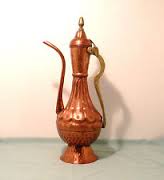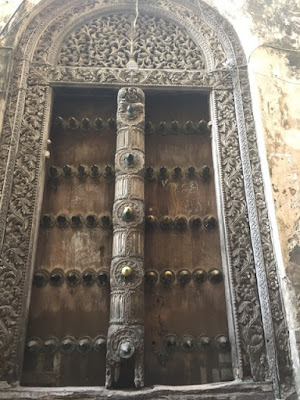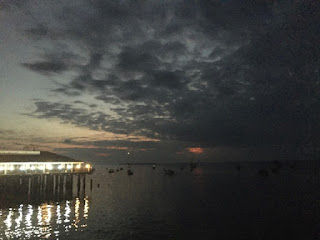Welcome to Zanzibar!
Mambo!
As I mentioned in my last post, we took my grandparents to Zanzibar while they were visiting us. It was so cool, I just had to put a post up about this island that is filled to the brim with history, spices, and doors. (I'll explain that in a moment)
When we arrived in Zanzibar, it took me under five minutes to decide that the hassle to get there was definitely worth it. We were staying in the old part of Zanzibar called Stone Town, which consists of old alleys and pathways that wind around in circles, lined on both sides by ornate wooden doors with carvings all over them, shops filled to the brim with paintings, bright clothing, beautiful wood carvings, and beaded jewelry, old houses that have been there for centuries, women offering ornate henna painting (I was seriously tempted), and much more. You could wander for hours and never get bored. I even found a shop that sold old kitchenware. Just to make sure you're not thinking of rusty mixers and moldy waffle makers, I put a picture down below.
During our first day, we just wandered around through all the narrow alleys, looking in all the shops and admiring the doors. I might as well explain what they are before you start thinking we're crazy. Stone Town is most famous for its old doors. They are massive, beautiful, and have different meanings. By looking at the doors, you can tell who lives there. For example, the Arab doors are rectangular with carvings all around, whereas the Indian doors are built with beautiful arches up above. The brass studs (which I'll show in a moment) originated from India as a form of protection.
Our guide explained how, in Zanzibar, if someone invites you over to their house, they actually just want to point out their door. They might not even invite you inside their house, the main reason for inviting you over is to show you the door.
This is one of millions of shops in Zanzibar that are overflowing with bright and colorful paintings.
For dinner, we went down to the waterfront. Instead of sitting in cramped restaurants with no air flow every night, people on Zanzibar will go to the boardwalk and buy from the vendors. It's like this one massive food court on the waterfront, with a lovely breeze and an even better view of the sunset over the ocean. I think they've got it figured out. The only problem was the cats. You won't believe how many cats there were! I fed one little kitten, and six cats followed me around for the entire night! Then one cheeky little nuisance stole food off my plate. I didn't finish my food, needless to say.
This is the view from where we ate dinner
The next day, we went on the tour of Stone Town. That place is amazing! Its like living in a labyrinth. The small walkways, the houses right next to one another and towering high above you. Water pipes, internet wires, and electricity wires all strung together and weaving in and out of the buildings on either side of you.
After that, we went on a tour of the Anglican Church of Christ. A beautiful, massive church that sits upon the site of one of history's most prominent slave headquarters. Slaves used to be brought from all over Africa to Zanzibar, where they would be sold and taken to all parts of the world.
When brought here, they were forced underground into tiny little cellars that held over fifty slaves at a time. They were chained to the wall and left there for days. They were forced to sit on ledges that took up most of the room, and the space from the ground they were sitting on to the ceiling was too small for comfort. There was one tiny slit of a window; the only source of light in their underground dungeon. No toilets, and even more importantly: no food.
This was one of the rooms underground. You can see the small window in the background.
If they survived that cruelty, they were taken above ground to be sold. Before they were sold, they were tied to a tree and whipped with stinging nettles to test their worth. If they didn't scream or pass out, they were sold for a higher amount of money. To this day, the tree stands in that spot, named "The Whipping Tree" in remembrance of what that tree symbolized to the slaves.
Standing by the whipping tree, and going underground to stand in those dark, cramped rooms was heart-wrenching. To hear the guide say how many slaves had passed through those rooms, to hear of how often they died simply from lack of food or water, to listen to him say that children even as young as my sister were subjected to these things, was simply awful. It was almost unimaginable to think that things as cruel and evil as this happened in abundance.
The slave trade was finally abolished in 1876, but not before millions of people had passed through Zanzibar as slaves. The church now stands on the site of the former slave trade headquarters, in remembrance of the slave trade that once stood in that spot as the most productive and flourishing trade in Zanzibar.
After leaving the church, we visited a spice plantation. That was pretty cool. I could not believe how many things actually came from trees. I can see you laughing at me, but its true! Did you know that iodine comes from a tree? They even grow it in Zanzibar!
Natalie had some fun while we were waiting for our food.
We had an awesome time in Zanzibar. I think out of all the places in the world I've visited, Zanzibar ranks the highest on my list. I loved the culture, the spices, the shops, and the entire town. It's filled with diversity, and it has a rich tapestry of history that could never grow old. The sultans, the slave trade, the princesses, and the wars are woven together to form an unforgettable story.
As I mentioned in my last post, we took my grandparents to Zanzibar while they were visiting us. It was so cool, I just had to put a post up about this island that is filled to the brim with history, spices, and doors. (I'll explain that in a moment)
When we arrived in Zanzibar, it took me under five minutes to decide that the hassle to get there was definitely worth it. We were staying in the old part of Zanzibar called Stone Town, which consists of old alleys and pathways that wind around in circles, lined on both sides by ornate wooden doors with carvings all over them, shops filled to the brim with paintings, bright clothing, beautiful wood carvings, and beaded jewelry, old houses that have been there for centuries, women offering ornate henna painting (I was seriously tempted), and much more. You could wander for hours and never get bored. I even found a shop that sold old kitchenware. Just to make sure you're not thinking of rusty mixers and moldy waffle makers, I put a picture down below.
During our first day, we just wandered around through all the narrow alleys, looking in all the shops and admiring the doors. I might as well explain what they are before you start thinking we're crazy. Stone Town is most famous for its old doors. They are massive, beautiful, and have different meanings. By looking at the doors, you can tell who lives there. For example, the Arab doors are rectangular with carvings all around, whereas the Indian doors are built with beautiful arches up above. The brass studs (which I'll show in a moment) originated from India as a form of protection.
Our guide explained how, in Zanzibar, if someone invites you over to their house, they actually just want to point out their door. They might not even invite you inside their house, the main reason for inviting you over is to show you the door.
This is one of millions of shops in Zanzibar that are overflowing with bright and colorful paintings.
For dinner, we went down to the waterfront. Instead of sitting in cramped restaurants with no air flow every night, people on Zanzibar will go to the boardwalk and buy from the vendors. It's like this one massive food court on the waterfront, with a lovely breeze and an even better view of the sunset over the ocean. I think they've got it figured out. The only problem was the cats. You won't believe how many cats there were! I fed one little kitten, and six cats followed me around for the entire night! Then one cheeky little nuisance stole food off my plate. I didn't finish my food, needless to say.
This is the view from where we ate dinner
The next day, we went on the tour of Stone Town. That place is amazing! Its like living in a labyrinth. The small walkways, the houses right next to one another and towering high above you. Water pipes, internet wires, and electricity wires all strung together and weaving in and out of the buildings on either side of you.
After that, we went on a tour of the Anglican Church of Christ. A beautiful, massive church that sits upon the site of one of history's most prominent slave headquarters. Slaves used to be brought from all over Africa to Zanzibar, where they would be sold and taken to all parts of the world.
When brought here, they were forced underground into tiny little cellars that held over fifty slaves at a time. They were chained to the wall and left there for days. They were forced to sit on ledges that took up most of the room, and the space from the ground they were sitting on to the ceiling was too small for comfort. There was one tiny slit of a window; the only source of light in their underground dungeon. No toilets, and even more importantly: no food.
This was one of the rooms underground. You can see the small window in the background.
If they survived that cruelty, they were taken above ground to be sold. Before they were sold, they were tied to a tree and whipped with stinging nettles to test their worth. If they didn't scream or pass out, they were sold for a higher amount of money. To this day, the tree stands in that spot, named "The Whipping Tree" in remembrance of what that tree symbolized to the slaves.
Standing by the whipping tree, and going underground to stand in those dark, cramped rooms was heart-wrenching. To hear the guide say how many slaves had passed through those rooms, to hear of how often they died simply from lack of food or water, to listen to him say that children even as young as my sister were subjected to these things, was simply awful. It was almost unimaginable to think that things as cruel and evil as this happened in abundance.
The slave trade was finally abolished in 1876, but not before millions of people had passed through Zanzibar as slaves. The church now stands on the site of the former slave trade headquarters, in remembrance of the slave trade that once stood in that spot as the most productive and flourishing trade in Zanzibar.
After leaving the church, we visited a spice plantation. That was pretty cool. I could not believe how many things actually came from trees. I can see you laughing at me, but its true! Did you know that iodine comes from a tree? They even grow it in Zanzibar!
Natalie had some fun while we were waiting for our food.
We had an awesome time in Zanzibar. I think out of all the places in the world I've visited, Zanzibar ranks the highest on my list. I loved the culture, the spices, the shops, and the entire town. It's filled with diversity, and it has a rich tapestry of history that could never grow old. The sultans, the slave trade, the princesses, and the wars are woven together to form an unforgettable story.







Comments
Post a Comment